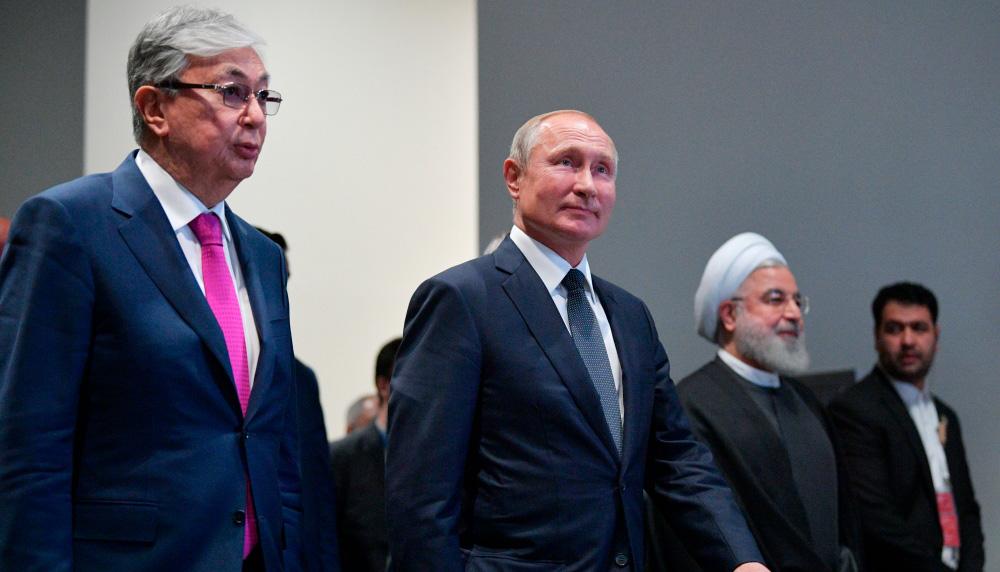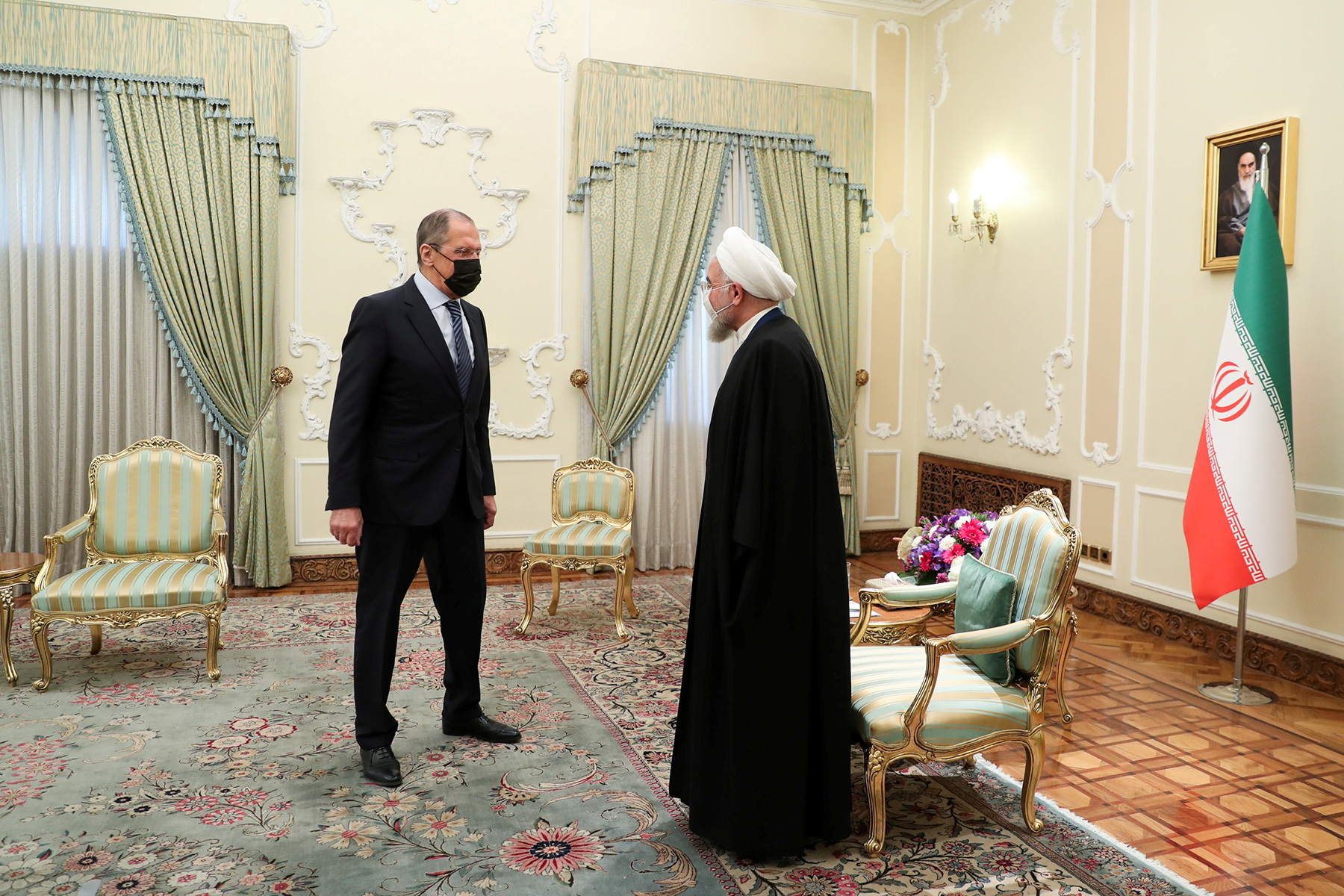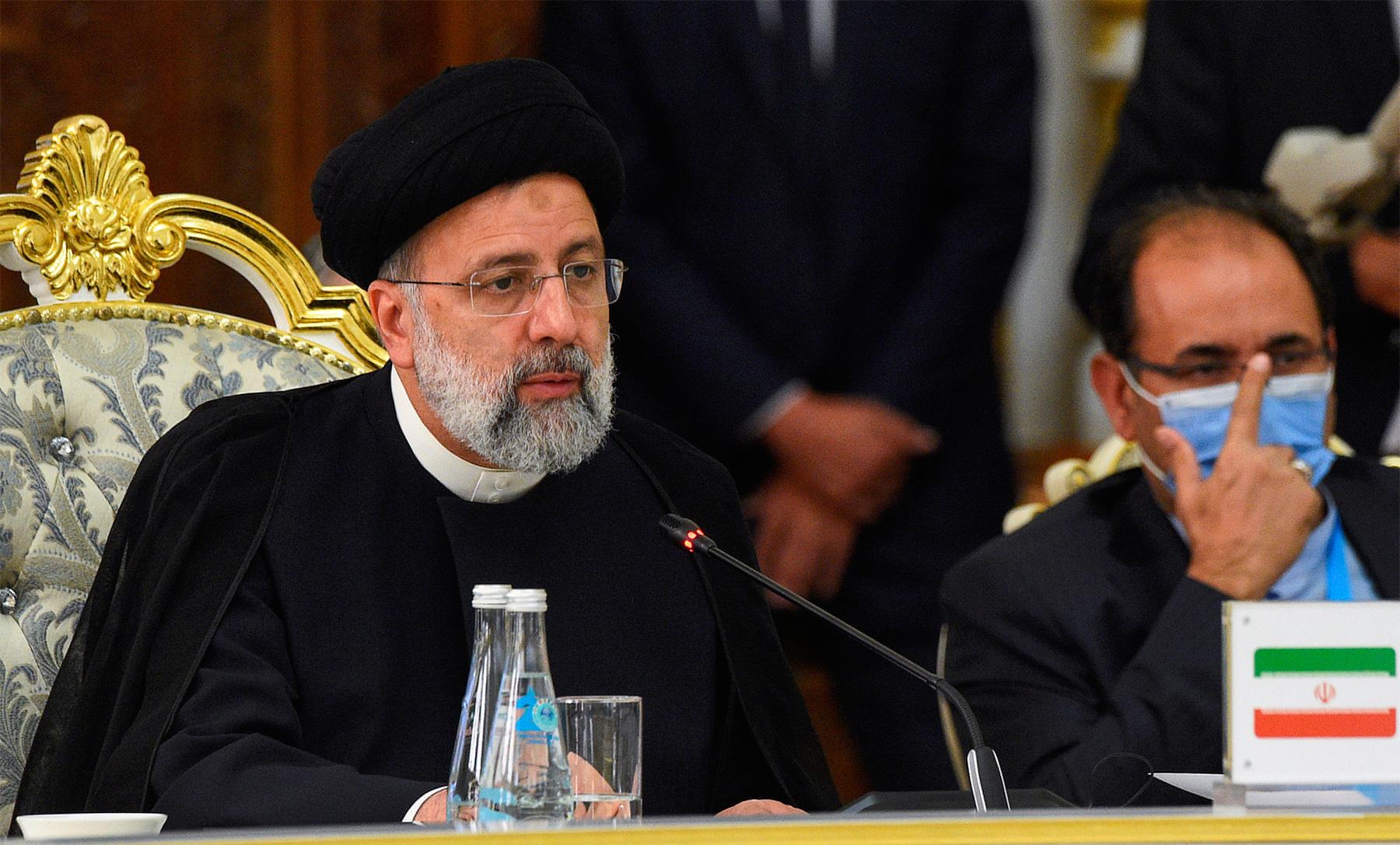The EAEU-Iran preferential trade agreement (PTA) implemented on October 27, 2019, offers lower tariffs on 862 commodity types, of which 502 are Iranian exports to the Eurasian Economic Union. This agreement significantly increased the trade volume between Iran and the member countries of the Union. In the period between October 2019 and October 2020, the trade volume grew by more than 84%. Indeed, the trade flows gradually gathered pace and the value of trade between Iran and the members of the EAEU exceeded $1.957 billion in the first five months of the current Iranian calendar year (March 21 – August 22, 2021), marking 96 per cent growth compared to the same period of the previous year. As the agreement was designed to be in effect for 3 years, it is to expire on October 5, 2022. For this reason, the parties have recently begun technical and expert negotiations to upgrade the PTA to a free trade agreement (FTA). If this happens, the number of items of the agreement will rise to at least 8000, which is sure to set off a massive increase in the volume of trade between Iran and the Union. Although there are various capacities and advantages between Iran and the Eurasian Economic Union, there are also problems that need to be taken seriously in the process of upgrading the EAEU-Iran PTA to an FTA. These include:
-
limitations of money transfer transactions between the banking systems of the five member states of the Union and Iran because of the unilateral U.S. sanctions against the country;
-
underdeveloped rail communication between Iran and Russia in the Caucasus region, with the incomplete Rasht-Astara rail line being the only remaining railway section of the North-South Transport Corridor (NSTC) between Iran, the Republic of Azerbaijan and the Russian Federation;
-
shortage of trucks and wagons equipped with refrigerated containers, as more than 60% of Iran's export to the Eurasian Economic Union is agricultural and livestock products
-
low shipping capacities of Iranian ports in the Caspian Sea and a low percentage of Roll-on/Roll-off shipping (RoRo);
-
lack of adequate knowledge of Iran and the member countries of the EAEU about each other's markets and economic and trade capacities.
Therefore,
in the process of upgrading the PTA to an FTA, due attention should be paid to
its problems and solutions. In this article, some solutions are mentioned such
as the development of “Mir Business Bank” in Russia and Armenia, Belarus,
Kazakhstan and Kyrgyzstan, use of Russian SWIFT in the EAEU countries,
completion of the Rasht-Astara railway, intensification of shipping in the
Caspian Sea, introducing the economic and trade capacities of the two sides in
television networks and media, and holding specialized exhibitions with the participation
of Iranian businessmen, traders and the members of EAEU. Clearly, unless
banking, transit and trade infrastructure is established, the prospective
agreement will be nothing more than words on paper.
The Treaty on the Eurasian Economic Union (EAEU) was signed on 29 May 2014 by the leaders of Belarus, Kazakhstan, and Russia, and came into force on 1 January 2015. Treaties for Armenia's and Kyrgyzstan's accession to the EAEU were signed on 9 October and 23 December 2014, respectively. Armenia's accession treaty came into force on 2 January 2015 and Kyrgyzstan's—on 6 August 2015. In January 2015, the EAEU in its full membership officially began its activities. The core objective of the Single Economic Space is the development of a single market and achieving the “four freedoms”, namely the free movements of “goods”, “capital”, “services” and “people” within the single market. The EAEU has
an integrated market of 184 million people and a gross domestic product of over $5 trillion.
One year after the formation of the EAEU, in 2016, Iran proposed to the Eurasian Economic Commission the creation of a free trade zone between itself and this economic bloc. After two years of negotiations, an interim agreement was concluded and was signed on May 17, 2018, within the framework of the Astana Economic Forum. This was followed by the “Law on Interim Agreement Establishing a Free Trade Area between the Islamic Republic of Iran and the Eurasian Economic Union and its Member States” passed by the Iranian parliament in June 2019. The importance of this agreement was further underlined by the participation of the former Iranian president Hassan Rouhani in the EAEU summit in Yerevan, Armenia on October 1, 2019. Shortly after that, the EAEU-Iran preferential trade agreement (PTA) was implemented on October 27, 2019, offering lower tariffs on 862 commodity types, of which 502 are Iranian exports
to the EAEU.
This agreement significantly increased the trade volume between Iran and the member countries of the Union. In the period between October 2019 and October 2020, the trade volume increased by more than 84%. However, the coronavirus crisis that caused border closures and health restrictions has significantly curbed this growing trend. After the start of vaccination in Iran and the member states of the EAEU and the reopening of borders, the volume of trade gradually climbed and the value of trade between Iran and the members of the EAEU exceeded $1.957 billion in the first five months of the current Iranian calendar year (March 21 – August 22, 2021), marking 96 per cent growth compared to the same period
of the previous year.
Indeed, according to Hossein Kakhaki, director-general of the International Cooperation Department of the Islamic Republic of Iran Customs Administration (IRICA), Iran exported over $420.823 million worth of commodities to the EAEU members in this period, 37 per cent more than the figure for the same period in 2020. During these five months of 2021, the top destinations for Iranian exports to the EAEU were:
-
Russian Federation ($222.743 million),
-
Armenia ($99.683 million),
-
Kazakhstan ($63.677 million),
-
Kyrgyzstan ($26.981 million),
-
Belarus ($7.738 million).
This volume of trade was achieved at a time when the United States withdrew from the Joint Comprehensive Plan of Action (JCPOA) in May 2018 and was following the policy of “maximum pressure” against Iran.
As the agreement was designed to be in effect for 3 years, it is to expire on October 5, 2022. For this reason, the parties have recently begun technical and expert negotiations to upgrade the PTA to a free trade agreement (FTA). In this regard, Iran and the EAEU held their first round of negotiations on upgrading the PTA to a free trade deal in Tehran on July 19, 2021. According to Hamid Zadboum, the former head of Trade Promotion Organization of Iran, the two sides have agreed upon most terms related to the outlines of the PTA; the partner countries have reached an agreement to gradually remove tariffs and duties on most imports and exports in the near future to expand
business opportunities.
After the new Iranian government headed by Ebrahim Raisi came to power in August 2021, the process of negotiations between Iran and the EAEU accelerated. Iran's new president announced “neighborhood policy” and “economic diplomacy” as two main priorities of Iran's foreign affairs vector. Iran's change of membership from the main observer in the Shanghai Cooperation Organization (SCO), which took place at the Tajikistan Summit in September 2021, led to promoting this approach by the new Iranian government. Regarding the EAEU, a new round of talks between Iran and the Union was held in Armenia on November 1, 2021. Head of international and trade affairs in Trade Promotion Organization (TPO) of Iran, Mir Hadi Seyyedi said that Iran and the EAEU had previously held seven rounds of virtual meetings to discuss the potential free trade deal and in this meeting two sides reached an initial agreement to extend free trade arrangements to 80 per cent of goods covered in the PTA signed
in November 2019.
A very important point to note is that if the EAEU-Iran preferential trade agreement is upgraded to an FTA, the number of items of the agreement will rise to at least 8000, which is sure to set off a massive increase in the volume of trade between Iran and the Union. This could bring much of Iran's economic and trade potential into the Union. Iran has a total population of approximately 80 million that live in a total area of 1,648,195 sq km.; approximately 74 % of the population live in urban areas with an annual growth rate of 1.97%, making it a major consumer market for the member states of the Union. Iran has fifteen common land or water borders with neighboring countries. Numerous Iranian ports in the Caspian Sea in the north and the Sea of Oman and the Persian Gulf in the south, as well as an extensive road and rail network provide a convenient location to transit goods between Iran and the Eurasian Economic Union. In this regard, Iran has a very good position for the North-South corridor, the Persian Gulf-Black Sea corridor, and the One Belt One Road initiative. In addition to the mentioned capacities, there are also problems and challenges that can negatively affect the process of upgrading the PTA to an FTA and therefore should be considered in the process of upgrading the agreement.
The first problem is the limitations of money transfer transactions between the banking systems of the five member states of the Union and Iran because of the unilateral U.S. sanctions against the country. This has created serious constraints for businessmen and traders on both sides especially for filing letters of credit (LC). Currently, the creation of LC for Iran is done only by “Mir Business Bank” in Russia, which is a Russian bank with a 100% participation of foreign capital; its founder and the only shareholder is Bank Melli Iran. “Mir Business Bank” has three branches in Moscow, Astrakhan and Kazan. But in the other four EAEU member states, Belarus, Armenia, Kazakhstan and Kyrgyzstan, transfers of money by exporters and importers are problematic and take place mainly through exchange offices. The establishment of Mir Business branches in these countries or the use of Russian SWIFT could possibly solve part of this problem.
The second problem is underdeveloped rail communication between Iran and Russia in the Caucasus region. Unfortunately, due to the non-membership of Turkmenistan and the Republic of Azerbaijan in the EAEU, Iran does not have a direct land connection with the Union. And Armenia—although a neighbor of Iran and a member of the EAEU—does not share a border with Russia. In such circumstances, the railway network is very important to overcome this geographical gap, especially since the volume of goods transported by rail is far greater than the land and truck route. Fortunately, in December 2014 the 920-kilometer East Caspian railroad between Iran, Turkmenistan and Kazakhstan was opened in December 2014. It is now an important trade artery that plays an important role in the export and import of products from Iran to Kazakhstan and the eastern regions of Russia. But there is no similar railway network in the Caucasus region, between Iran and Russia yet. As a result of the First Nagorno-Karabakh War, unlike Turkey and Russia, Iran missed its rail connection to the Caucasus. In these circumstances, the Astara-Rasht-Qazvin railway was formed in the framework of the North-South Transport Corridor (NSTC). Astara (Iran)-Astara (Azerbaijan) railway was officially inaugurated in a ceremony held on March 29, 2018; the Rasht-Qazvin segment was opened on 6 March 2019. Therefore, a 164 km-long railway route from Rasht to Astara in the Iranian province of Gilan—located on the southern shore of the Caspian Sea and adjacent to the Republic of Azerbaijan—is the only remaining railway section in NSTC between Iran, the Republic of Azerbaijan, the Russian Federation and India. Since the railway route between Astara to Rasht has not been built inside Iran yet, freight trains at Astara (Iran) railway station will be transferred to trucks or vice versa. Therefore, the completion of the Rasht-Astara railway, which costs approximately $500 million, should be given more attention as an important priority for the three countries of Iran, Azerbaijan and Russia. It should be noted that Russia accounts for more than 80% of Iran's trade with the EAEU. For this reason, direct rail communication between Iran and Russia can increase the volume of trade between the two countries, especially in western and southern Russia such as North Caucasian Federal District, Volga Federal District and Southern Federal District.
The third obstacle to increasing the volume of trade between Iran and the EAEU, especially in the form of free trade, is the shortage of trucks and wagons equipped with refrigerated containers. This is important because more than 60% of Iran's exports to the EAEU are agricultural and livestock products. On the other hand, Iran imports products such as meat from the Union, which also require refrigerated containers. The long land route and the very cold weather in the winters of Kazakhstan, Armenia and Russia, as well as the very hot weather in Turkmenistan in the summer have created conditions within which it is not possible to export and import agricultural and livestock products without refrigerated containers. Unfortunately, at present, the number of trucks and wagons equipped with refrigerated containers does not cover the high volume of exports and imports of agricultural and livestock products between Iran and EAEU. Therefore, serious attention should be paid to this issue in the process of converting the PTA into an FTA.
The forth problem lies in the domain of low shipping capacities of Iranian ports in the Caspian Sea, although the country shares a maritime border with Kazakhstan and Russia. The capacity of Turkmen port in Golestan province, Nowshahr and Amirabad ports in Mazandaran province and Anzali and Astara ports in Gilan province are transfer points of more than 40 million tons of goods per year; however, only 6 million tons are currently exploited. Although there are trade links between the ports of Astrakhan and Makhachkala in Russia, as well as the port of Aktau in Kazakhstan, the current capacity is far from its potential. Intensifying commercial shipping in the Caspian Sea, a regular and long-term shipping plan that is predictable and planned for traders and businessmen, and especially the development of Roll-on/Roll-off Shipping (RORO) are one of the measures that can increase the volume of trade between Iran and the EAEU.
The fifth—and perhaps the most important—problem is the lack of adequate knowledge of Iran and the member countries of the EAEU about each other's markets and economic and trade capacities. Although the situation has improved significantly since the implementation of the PTA in October 2019, the problem of information asymmetry persists. In order to solve this problem, it is necessary to bring up the economic and trade capacities of the two sides in the media, to hold specialized exhibitions with the participation of Iranian businessmen, traders and the member countries on a regular basis. The chambers of commerce of Iran, Russia, Kazakhstan, Kyrgyzstan, Belarus and Armenia should work on strengthening their cooperation. In this regard, the inauguration of Iranian Trade Office in Astrakhan in October 2017 and holding the first exclusive exhibition “Eurasia Expo” in Tehran on July 9–13, 2021, are beneficial and effective actions that need to be encouraged in the future. In this process, it is very important that the new conditions that will be created after the upgrade of the EAEU-Iran PTA to an FTA are clearly explained to the businessmen and chambers of commerce.
Overall, the implementation of the EAEU-Iran PTA is a very important development that has taken place in recent years in Iran's relations with Eurasia. This agreement has had a very positive effect on increasing the volume of trade between the two sides. But at the same time, it made the weaknesses and problems of this path clear to both sides. Therefore, in the process of upgrading this agreement to an FTA, due attention should be paid to its problems and solutions. Clearly, unless banking, transit and trade infrastructure is established, the prospective agreement will be nothing more than words on paper.







